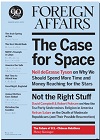In 2007, the World Bank was in crisis. Some saw conflicts over its leadership. Others blamed the institution itself. When the International Bank for Reconstruction and Development, the cornerstone of what became the World Bank Group, was founded in 1944, poor and war-torn countries had little access to private capital. Sixty years later, however, private-sector financial flows dwarfed public development assistance. “The time when middle-income countries depended on official assistance is thus past,” Jessica Einhorn, a former managing director of the World Bank wrote in these pages in 2006, “and the IBRD seems to be a dying institution.” In round table discussions and op-ed pages, the question was the same: Do we still need the World Bank?
I took the helm of the World Bank in 2007, bringing with me a different vantage point, gained from historical perspective, personal experience, and my sense of the international landscape: that institutions matter. The creators of the Bretton Woods multilateral system had designed an international economic architecture to deal with the causes of the global financial breakdown in the 1930s and with the economic and security problems they thought would follow World War II. The World Bank was part of that framework, which covered monetary and currency issues, trade, investment, development, and the reconstruction of broken states.
This article was originally published by Foreign Affairs. You can read the rest of the article here.
You can read exclusive content from Gateway House: Indian Council on Global Relations, here.
Copyright © 2012 by the Council on Foreign Relations, Inc.


